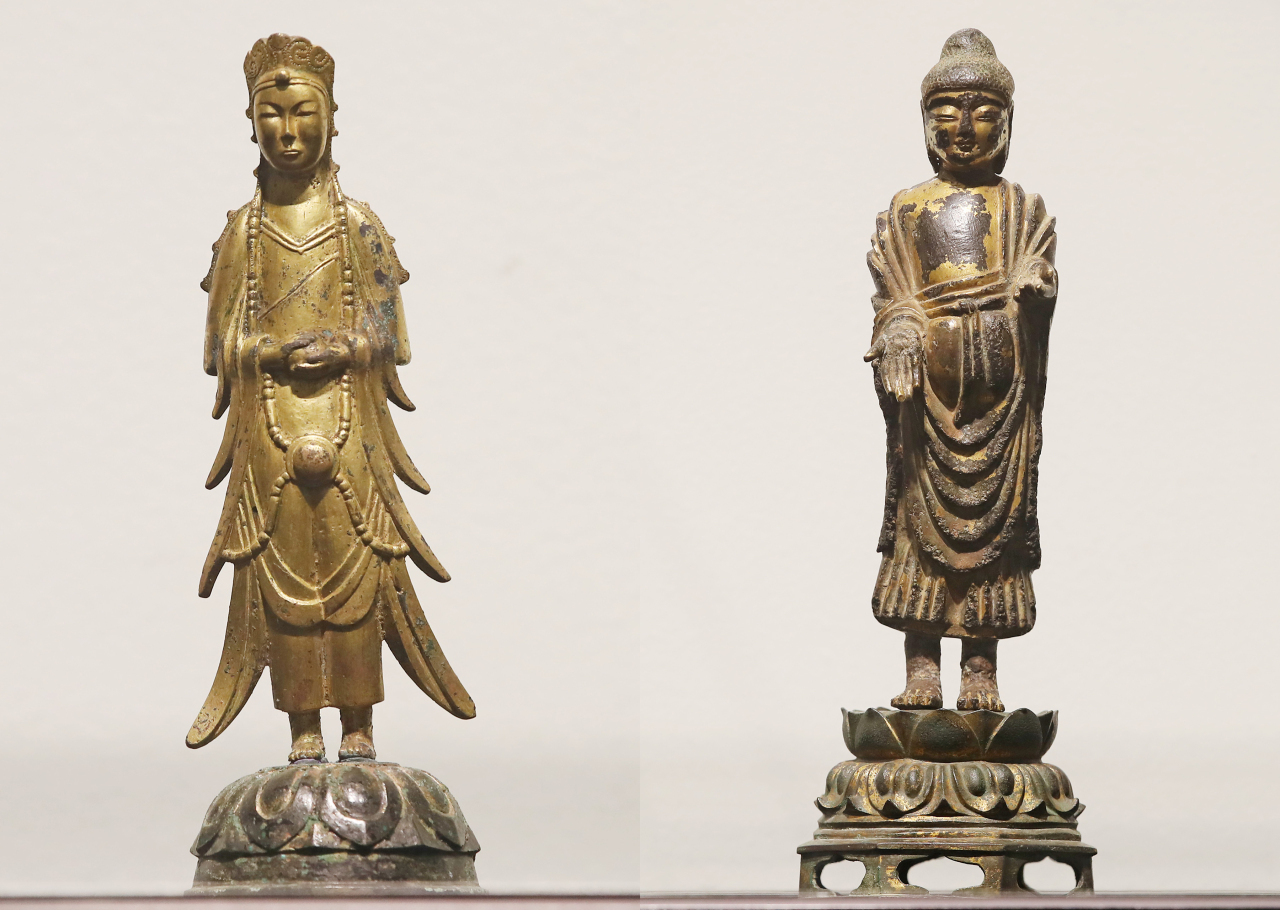Treasures from Kansong Art Museum fail to find new owners

Two state-designated treasures from the Kansong Art Museum failed to find new owners at an auction in Seoul on Wednesday.
They were the first sales attempt of the storied museum’s artifacts.
Treasure No. 284, Gilt-Bronze Standing Buddha and Treasure No. 285, Gilt-Bronze Standing Bodhisattva, both failed to attract bidders at the highly anticipated auction held by K-Auction in Sinsa-dong, southern Seoul.
The bidding started at 1.5 billion won for each treasure but no bidder came forward.
The Gilt-Bronze Standing Buddha is from the Unified Silla Kingdom (668-935) and the Gilt-Bronze Standing Bodhisattva is from the Three Kingdoms period (57 BC– AD 668). They were both designated as treasures in 1963.
Last Thursday, the Kansong Art Museum, a private museum in Seoul, confirmed that it had decided to auction the two treasures due to financial difficulties it was experiencing, partially due to inheritance taxes.
The museum also hinted that two other Buddhist sculptures might be auctioned.
Inheritance taxes are levied on all museum-owned cultural properties that are not national or regional government-designated artifacts. The museum’s collection holds over 5,000 items, 46 of which are state-designated artifacts, including 12 national treasures.
Currently, the museum is run by Chun In-keon, a grandson of its founder, Kansong Chun Hyung-pil (1906-1962). The current director assumed the post after Kansong’s eldest son, Chun Sung-woo, died in 2018.
Kansong established the museum in 1938, during the Japanese colonial era, to prevent Korea’s precious cultural artifacts from being taken out of the country. Many experts saw the auction as a tragedy, given the collection’s symbolic importance.
By Song Seung-hyun (ssh@heraldcorp.com)